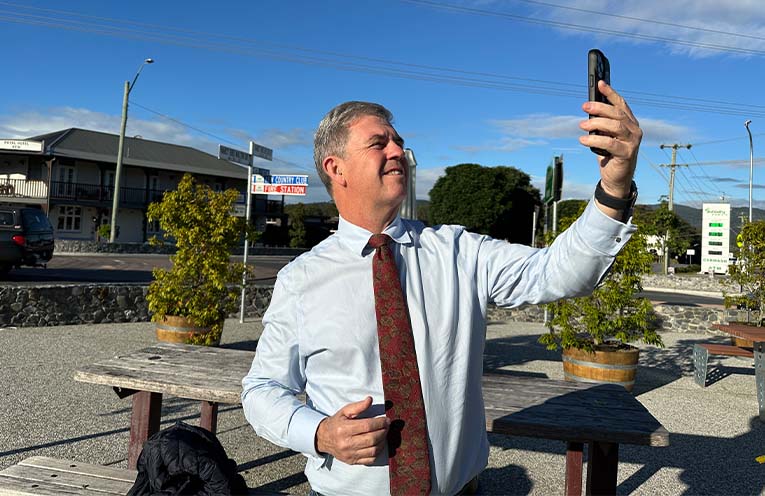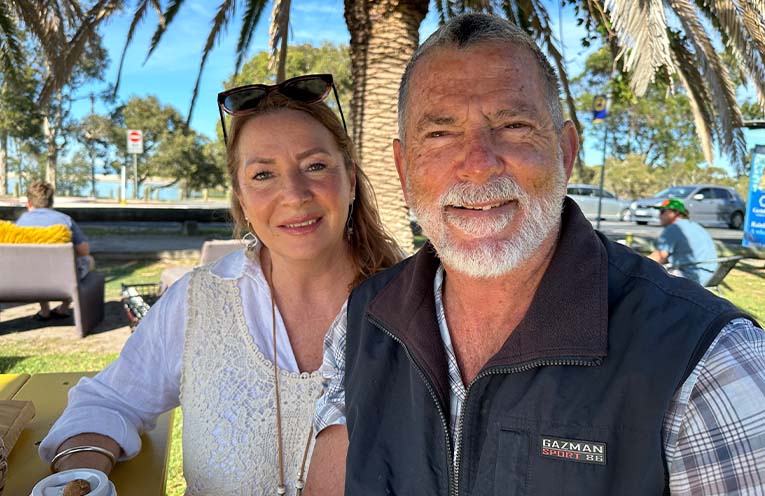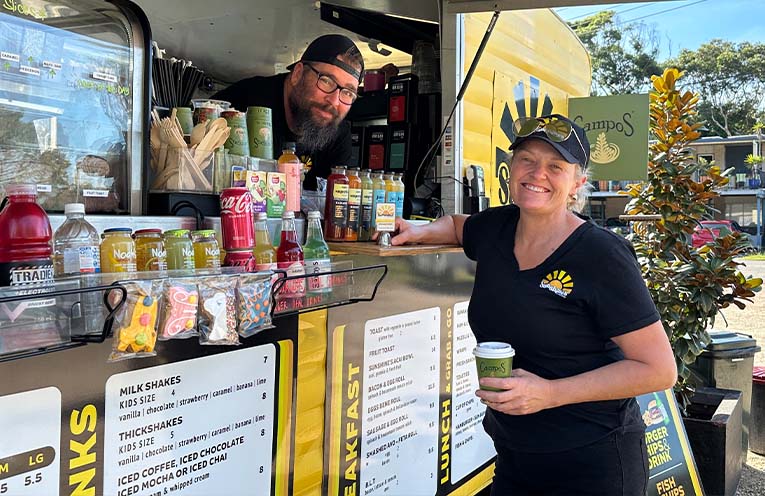
BOB and Cherie Heginbothom have what they call a “Telstra seat” on the porch of their Dunbogan home.
When their phones ring, that’s the only place they can take the call without it dropping out.
“Reception is terrible,” the newly married couple told News Of The Area.
“Telstra [keep] saying they’re upgrading the facilities in our area,” Bob said, “but we haven’t seen an upgrade in the last five years.”
Bronwyn Dean of Sunshines at Lake Cathie said when NBN contractors started digging in front of her outdoor cafe two years ago, she contacted Telstra, only to be told her site couldn’t be connected.
“I think it’s crazy that they spend thousands and thousands of dollars to dig for the cable, and now we can’t even use it,” she said.
While Telstra reception at her Bonny Hills home is “no problem”, Bronwyn is switching to Starlink at Sunshines to prevent her signals going “up and down”.
Lyne MP David Gillespie said confirmation in the Federal Budget that the Mobile Black Spot Program would end in 2027 was a blow for locals.
He now wants the telcos to embrace low earth orbit satellites (LEOS).
“There are some areas in the Camden Haven that on paper are covered but just get one bar, and coverage on the highway is not nearly as good as it used to be,” he said.
He hopes this will improve when the shutdown of 3G in September releases spectrum to the 5G network.
Although 3G users will lose access to Triple Zero.
“Unfortunately, the way the system runs, you’ve got to choose Optus or Telstra.
“You might have bad reception on one and not the other… so you just have to work out what’s strong in your area,” Dr Gillespie said.
Communications Minister Michelle Rowland said the Mobile Black Spot program had not been cut and that “funding to the program will be through our $1.1 billion Better Connectivity Plan”.
By Sue STEPHENSON


